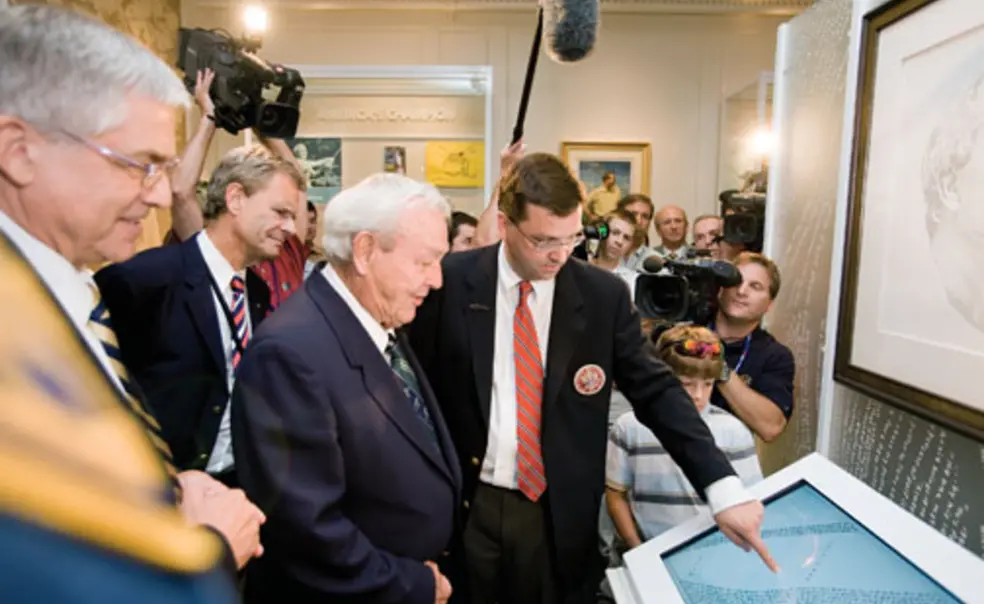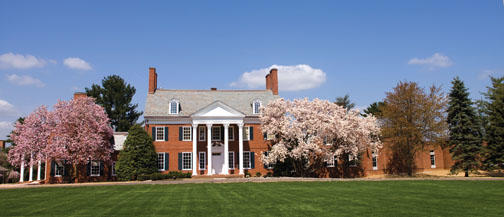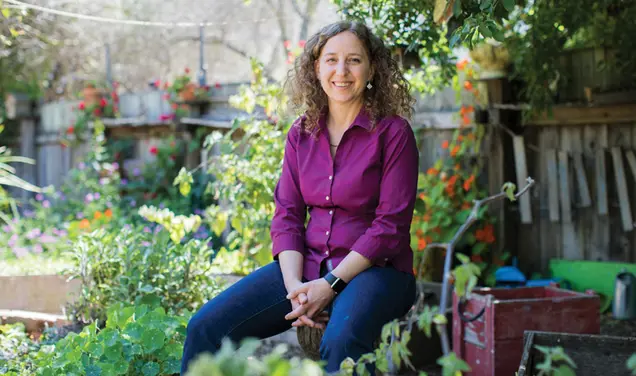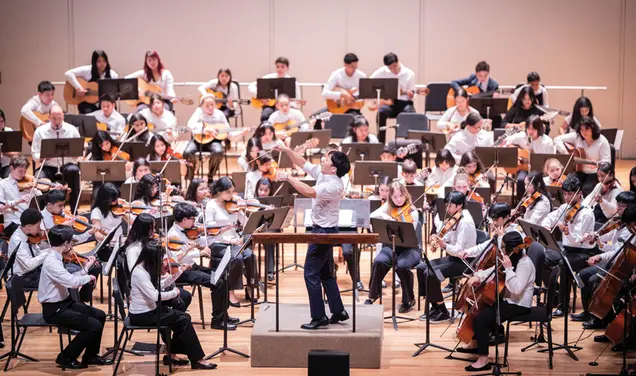James David Chase’s portrait of golfer Arnold Palmer, “Gratitude,” never will be mistaken for fine art, but it is an apt illustration of the devotion that Palmer has inspired from his army of fans. Chase spent some 14 years compiling quotations and phrases — 22,719 words in all — and incorporating them into an image of Palmer’s smiling face.
When Rand Jerris *99 first saw the “word portrait,” he knew exactly where to place it: at the entrance of the United States Golf Association Museum’s new Arnold Palmer Center.
The USGA Museum, located in Far Hills, N.J., is filled with similar touches, thanks in large part to Jerris, the museum’s director, who led a three-year, $20 million renovation and expansion project. The museum reopened last June, and in the seven months that followed, more than 10,000 golf fans visited the new exhibits.
From the “Hall of Champions,” a gateway that lists hundreds of USGA national title winners year by year (including George Dunlap Jr. ’31, the 1933 U.S. Amateur champion), to the final display, a medley of championship videos set to rocker Joey Ramone’s version of “What a Wonderful World,” the museum spotlights some of the game’s most influential stars.
Jerris, who earned his Ph.D. at Princeton studying early Christian and early medieval art, did not envision a career as a golf historian when he started cataloging the USGA’s collection as a 19-year-old intern. But several memorable summers working in the archives and a less-than-stellar academic job market made him reconsider. He joined the USGA as its first librarian and historian in 1999.
Jerris says his academic training has informed his work as a historian of sport. Art historians treat each piece of art or architectural monument as a product of its culture. Similarly, he has tried to view golf as a “cultural object.” “Its evolution is intimately tied and connected to the context in which it evolved and emerged,” Jerris says. “So we look at what was going on socially, politically, and economically in the United States and understand how that influenced the evolution of golf in this country.”
Familiar faces drive that narrative. Bobby Jones, Babe Didrikson Zaharias, Ben Hogan, Jack Nicklaus, and Palmer are among the legends featured in the museum’s displays and video jukeboxes. But lesser-known figures also tell the story of golf in America.
One gallery, for example, outlines the beginning of golf’s democratization, in the 1930s and ’40s, when dire economic conditions broke down some of the sport’s gender barriers and extended access to the working class, through construction of public courses by the Works Progress Administration.













1 Response
Arch Hewitt ’51
9 Years AgoAnother golf champion
Rand Jerris *99’s listing of alumni champions in “History on the links” (sports, April 1) could have included another U.S. Amateur champion, Bill Campbell ’45, who won the event in 1964 in Cleveland. Later, he even became president of the USGA, as well as captain of the Royal and Ancient Golf Club in Scotland (one of three Americans to reach this pinnacle), featured in PAW some years ago. Scoot over, George Dunlap ’31!